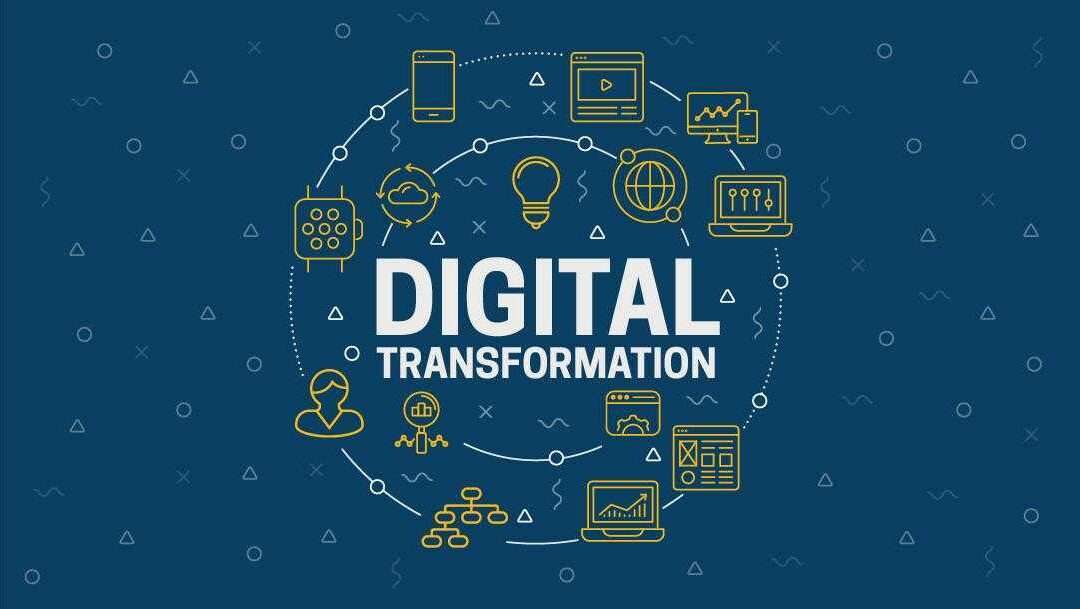digital-services

May 07,2025 • 3 min read
Modernizing Enterprises with Cutting-Edge Digital Transformation

Legacy systems reduce competitiveness. Outdated workflows slow decision-making. Enterprises that delay digitization face increased technical debt, poor customer engagement, and disconnected value chains.
Modernizing core operations through a digital transformation service enables businesses to stay agile, customer-centric, and innovation-driven. According to McKinsey, digital transformation can increase operational efficiency by 40% and reduce time-to-market by up to 50%.
Key business drivers include:
-
Rising customer expectations
-
Rapid tech advancements (AI, cloud, data analytics)
-
Supply chain volatility
-
Market disruption from agile startups
Digital transformation modernizes infrastructure, automates processes, and redefines how enterprises create, deliver, and capture value.
What Is Included in a Digital Transformation Service?
A digital transformation service is a structured set of strategies and technologies that rewire business capabilities for digital agility. It blends business consulting, technology integration, and operational redesign.
Core Components of a Digital Transformation Service:
|
Component |
Function |
|
Business Process Reengineering |
Streamline operations, remove redundancies |
|
Cloud Enablement |
Migrate workloads, enhance scalability and resilience |
|
Data Analytics & Intelligence |
Real-time decision-making, performance forecasting |
|
AI & Automation |
Intelligent workflows, chatbots, cognitive decision-making |
|
Application Modernization |
Replace legacy systems with modular, scalable architectures |
|
Customer Experience (CX) |
Omnichannel personalization, UI/UX improvements |
|
Cybersecurity Integration |
Threat detection, data protection, compliance |
Each component aligns with digital maturity goals to ensure measurable business outcomes.
How Does Digital Transformation Impact Enterprise Operations?
A digital transformation service redefines enterprise operations by replacing intuition with data, manual effort with automation, and siloed tools with integrated platforms.
Operational Outcomes Include:
-
60% faster cycle times (Gartner)
-
30–50% cost reduction in IT operations (Accenture)
-
2x increase in customer retention through enhanced digital engagement
Key Transformational Impacts:
-
Finance: Real-time dashboards, automated invoicing, predictive cost control
-
HR: AI-based recruitment, employee self-service portals, virtual onboarding
-
Supply Chain: IoT tracking, demand forecasting, smart inventory management
-
Sales & Marketing: Customer segmentation, omnichannel targeting, campaign automation
Digital transformation ensures functional agility and enterprise-wide visibility.
What Are the Common Enterprise Pain Points Solved by Digital Transformation?
1. Legacy System Inflexibility
-
Challenge: Incompatibility with modern APIs, cloud, and mobile platforms
-
Solution: Microservices architecture and platform reengineering
2. Data Silos
-
Challenge: Fragmented analytics and poor cross-functional insights
-
Solution: Unified data lakes and cross-departmental analytics pipelines
3. Manual Operations
-
Challenge: Time-consuming, error-prone workflows
-
Solution: Robotic Process Automation (RPA) and cognitive process automation
4. Poor Customer Experience
-
Challenge: Limited personalization and disconnected digital touchpoints
-
Solution: AI-driven personalization, chatbots, and journey orchestration
A structured digital transformation service addresses these challenges with scalable, future-proof solutions.
How Can Enterprises Start the Digital Transformation Journey?
Enterprises should begin with an assessment of digital maturity, followed by a clear transformation roadmap. The process must align with organizational goals and customer needs.
Steps to Start Digital Transformation:
-
Define Business Objectives: Tie digital efforts to ROI, efficiency, and customer metrics
-
Evaluate Current Capabilities: Conduct a digital readiness assessment
-
Select the Right Digital Transformation Service Partner: Prioritize domain expertise and cross-functional capabilities
-
Create a Phased Roadmap: Define short-term wins and long-term scalability
-
Pilot and Scale: Launch MVPs, validate impact, and scale across departments
This phased approach balances innovation with risk management.
What Comes Next for Enterprise Modernization?
Enterprises must now move from one-time transformation to continuous innovation. The future lies in AI-native architectures, decentralized data models, and real-time customer co-creation. Investing in an adaptable digital transformation service enables sustainable competitive advantage.
Ali Danish Details
User Profile
- Full name
- Ali Danish
- Email address
- ali.danish@corp.tkxel.com
- Join Date
- 2025-05-05
- State
- City
- Pincode
- Address
- Follow us on Facebook
- Follow us on Twitter
- Website Name
- Bio